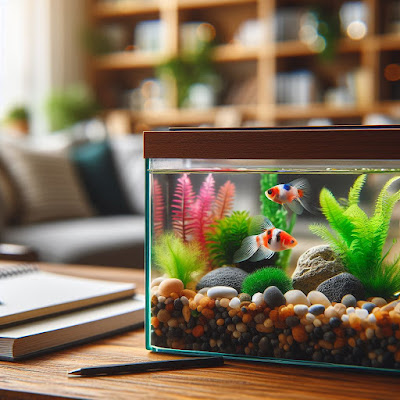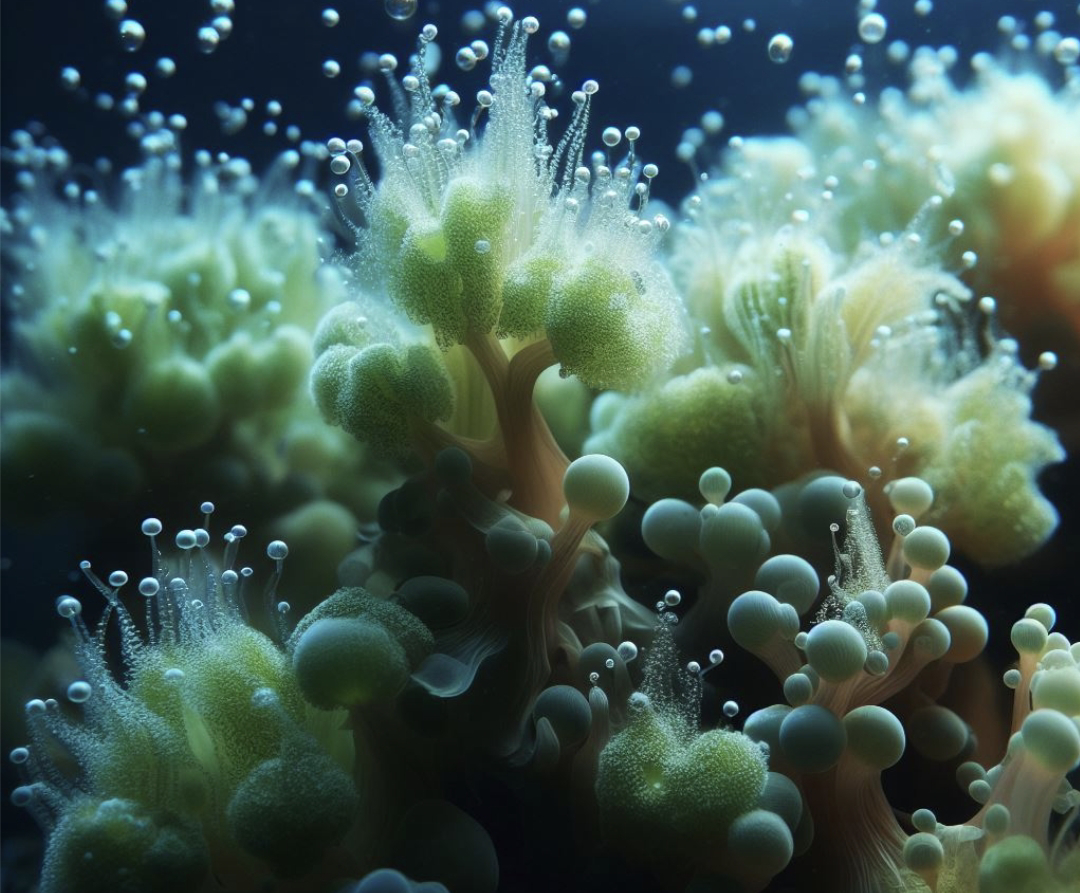All About Live Rock and Why You Want It
Keeping fish is considered by many a hassle-free hobby. You'll often see people with small Betta Bowls or Goldfish Tanks going unnoticed and unattended in the corner of an office or apartment. Sometimes these little side hobbies are given a ton of attention, and sometimes they are not. An often-made joke for people who are bad at caring for things is that they should get a fish. It’s true, but also a little unfair to the poor critter. Learning even a little bit about the types of fish you have, what they need to thrive, and how to keep up with your tank are essential to becoming a responsible fish keeper. As an added benefit to knowing the facts, your little fish will probably live longer and be more interesting as well!
Bettas, for example, are hardy and, unless you know about fish, probably look happy and healthy to the inexperienced pet owner. The further you delve into the world of fish keeping though, the more likely you are to realize that an aquarium is far from low maintenance, especially if you want to get anything other than the typical Betta or Goldfish.
While most people start with the one fish that they got from the pet store or that was given to them, small tanks somehow mysteriously seem to multiply. We like to think of it as the fish keeping fever. A pet that only requires a little extra attention, and doesn't have to be kept track of or brought to the groomer every few weeks, also adds a little spice to the decoration in your home is definitely a cool addition, and there is no wonder why people get addicted. The more advanced you get though, the more you realize how much more there is to learn and all the other cool things you can do to actually do some real fishkeeping.
One area where people often find themselves having to learn a little more is once they get into saltwater aquariums. Pet stores will sell saltwater fish just as they would easily care for freshwater species, and though there are a lot of picky freshwater ounces, the extra added need for saltwater tanks to match their natural environment does amount to a little bit more of a learning curve.
Fishkeeping isn't new, but it isn't as old as you'd think. The invention of the undergravel filter within just the last hundred years was interesting quite an innovation that people don't realize was the start of us trying to imitate the waterways in a small glass tank. There are thousands of aquatic species out there, many of which we still know so little about we can't even breed them, let alone keep them in tanks. While certain well-known hobbyist species of coral and fish seem to do well in our fish tanks, making them a little more natural is what we should really be striving for.
In the case of saltwater aquariums live rock and live sand are some of the must haves that we like to suggest. A reef is a slow building of ocean organisms over time. By time we mean hundreds and thousands of years in some cases. Each of those species that live interacting and living and dying in that same environment adds to the reef and helps it build. If you are trying to emulate a natural environment, adding dry rocks fish and sand will eventually get you there, but not anytime quickly! The little microscopic organisms growing in the sand and rock are essential to other species that you add to the tank. The cycle of life benefits from all the growth that you can't see going on, and this is where the live rock and sand comes in.
Live rock and live sand are key components in creating a thriving and authentic saltwater aquarium. These elements not only enhance the aesthetics of your tank but also play a crucial role in maintaining a healthy and stable aquatic ecosystem.
Live rock, as the name suggests, is essentially a piece of the ocean transplanted into your aquarium. It's not your ordinary decorative rock; rather, it's a piece of the ocean's reef ecosystem that is collected and cured for use in your tank. Live rock is teeming with diverse forms of life, including coralline algae, sponges, various species of bacteria, and even tiny invertebrates. These organisms form a complex and interdependent community that helps regulate the water chemistry of your tank, contributing to its overall stability.
One of the primary functions of live rock is biological filtration. The porous structure of live rock provides an ideal substrate for beneficial nitrifying bacteria to colonize. These bacteria convert harmful ammonia and nitrite into less toxic nitrate, preventing the buildup of these substances in your aquarium. This biological filtration is crucial for maintaining water quality and creating a suitable environment for your saltwater fish and corals.
Live sand, on the other hand, is another essential component in a saltwater aquarium. It consists of sand that is typically collected from ocean beds, harboring tiny life forms and microorganisms. This live sand serves as a natural biological filter, similar to live rock. The microorganisms in live sand help break down organic matter, reducing nitrate levels and improving overall water quality. Additionally, the burrowing and sifting activities of certain critters living in the sand, such as sand-sifting gobies and hermit crabs, help prevent detritus buildup.
The combination of live rock and live sand creates a miniaturized version of a reef ecosystem within your aquarium. This not only adds a natural and visually appealing dimension to your tank but also provides numerous benefits for your saltwater inhabitants. By introducing these live elements, you're jumpstarting the nitrogen cycle and promoting the development of a stable and self-sustaining ecosystem.
As a responsible fish keeper, incorporating live rock and live sand into your saltwater aquarium is a step toward achieving the ideal conditions for your aquatic pets. While it may require more initial effort and investment compared to a bare tank setup, the long-term benefits are well worth it. You'll find that your saltwater fish and corals thrive in this more natural environment, displaying their vibrant colors and behaviors, and contributing to a fascinating and dynamic underwater world right in your own home.
In conclusion, live rock and live sand are not just decorations but essential components that contribute to the overall health and stability of your saltwater aquarium. They recreate the intricate balance of life found in natural reef ecosystems and help you achieve a truly captivating and thriving underwater environment. So, if you're looking to take your fish-keeping hobby to the next level and provide the best possible care for your marine inhabitants, consider the addition of live rock and live sand to your saltwater aquarium setup. Your fish will thank you for their beauty and vitality, and you'll enjoy the rewards of a more immersive and authentic underwater experience.








.png)
